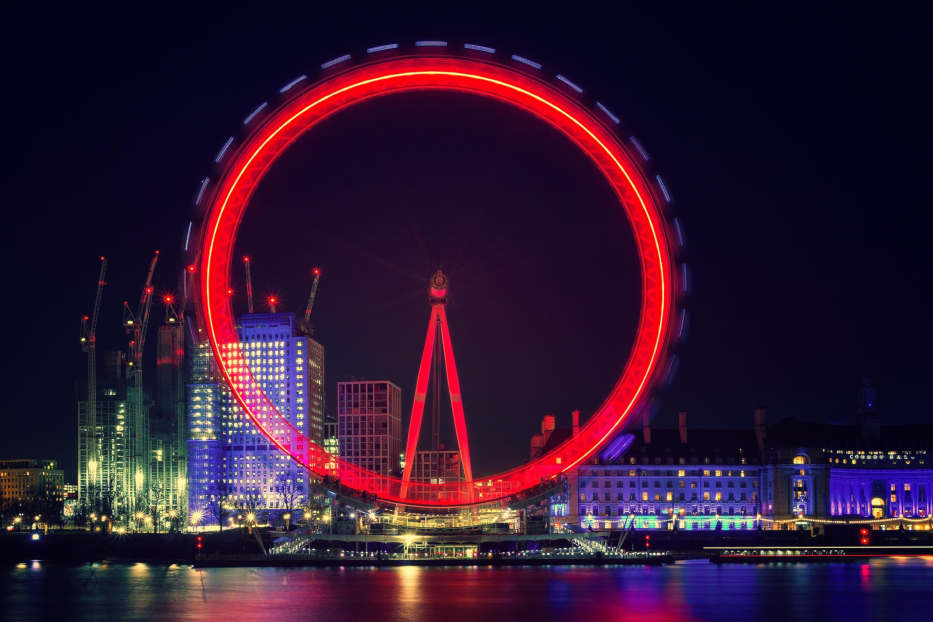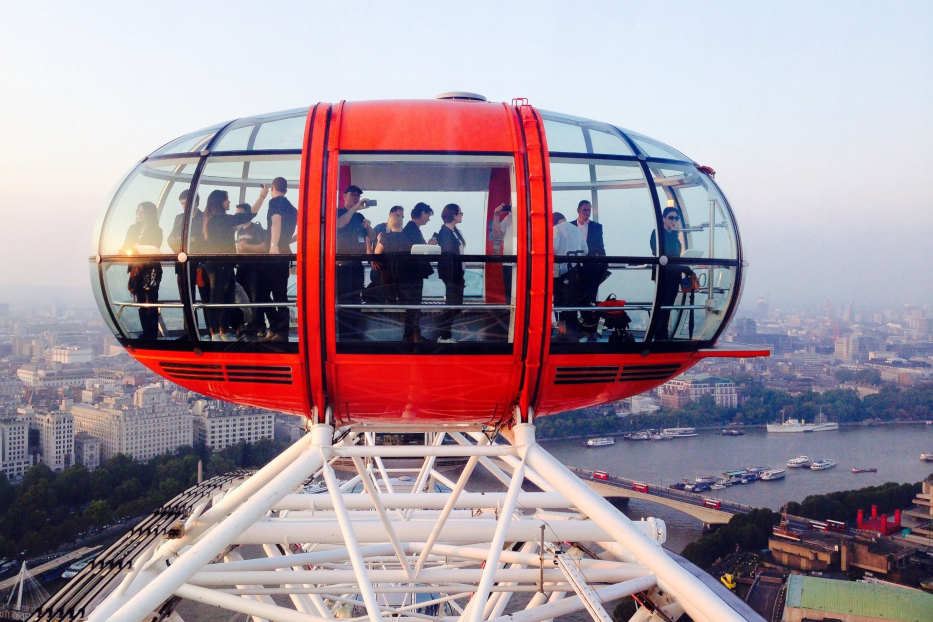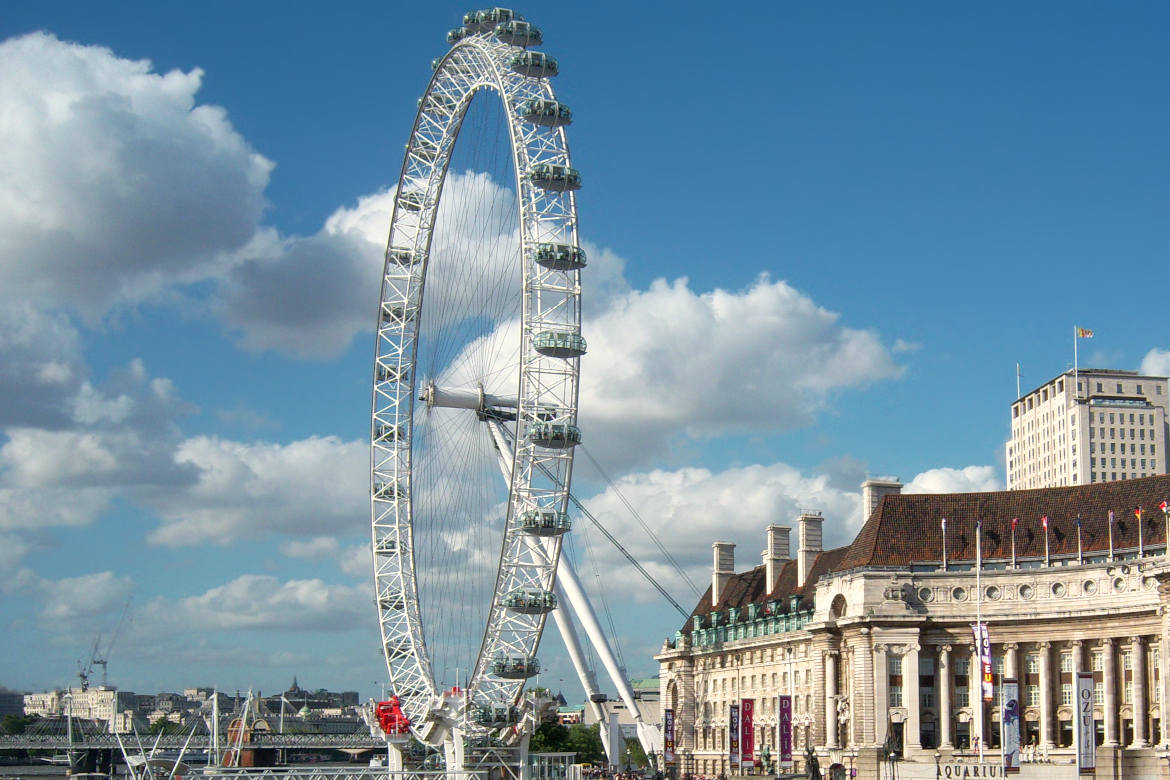For a city that prides itself on its centuries-old landmarks, the London Eye is a relatively recent addition. Yet, in the 25 years since it first rose above the Thames, it has become as iconic as Tower Bridge or St Paul’s Cathedral.
Few could have predicted that what began as a temporary millennium attraction would so profoundly reshape the city’s skyline. As the London Eye marks its 25th anniversary today, celebrations across London highlight its lasting significance.
Table of Contents
A New Vision for a New Millennium
In the late 1990s, as Britain prepared to usher in the 21st century, an architectural competition sought to mark the occasion with an ambitious project.
A pair of husband-and-wife architects, David Marks and Julia Barfield, proposed an enormous Ferris wheel: a structure that, unlike other millennium projects, would offer visitors an ever-changing perspective of the city.

The idea of a giant observation wheel in the heart of London was met with skepticism. At 135 meters (443 feet), it would be the tallest of its kind in the world upon completion.
But despite doubts, the project gained backing, in part because it required no government funding. Instead, it was championed by British Airways, the Tussauds Group, and other private investors.
Construction of the Eye was a meticulous process, made more challenging by its location on the banks of the Thames. The wheel was assembled flat before being raised in a complex engineering feat that took over a week to complete.
When it finally began rotating on 9 March 2000—exactly 25 years ago today—Londoners were initially uncertain about whether it would find a lasting place in their city’s consciousness.
From Temporary Attraction to Permanent Fixture
Originally designed as a five-year installation, the Eye’s overwhelming popularity soon silenced any discussion of dismantling it. Within a year, it had attracted over two million visitors—far exceeding expectations.
By 2005, it had secured a long-term lease, ensuring its place on the South Bank for the foreseeable future. Over the years, it has undergone refurbishments, including the installation of LED lighting.
Unlike older landmarks built in an era of monarchy or empire, the London Eye represents a different kind of British identity. It is democratic in its experience—anyone can buy a ticket and enjoy the same panoramic views, from Buckingham Palace to the distant spires of Canary Wharf.
It also embodies a spirit of innovation, using state-of-the-art engineering to create a ride that is both smooth and awe-inspiring.
An Engineering Marvel
The London Eye remains one of the most complex observation wheels ever built. Unlike traditional Ferris wheels, which have spokes and a rigid structure, the Eye operates more like a bicycle wheel, with tensioned steel cables supporting its rim.
Each of its 32 glass capsules—one for each London borough—is climate-controlled and can hold up to 25 passengers. It takes approximately 30 minutes for a full rotation, moving at a leisurely pace that allows riders to take in the unfolding cityscape.

One of its lesser-known innovations is the loading process. Unlike conventional rides that require stopping and starting, the Eye moves continuously, allowing passengers to step on and off while it is in motion – a design that enhances efficiency and reduces mechanical strain.
Reasons to Visit the London Eye
Over the past 25 years, the London Eye has witnessed dramatic changes in the city below. It has seen the rise of The Shard, the expansion of Canary Wharf, and the transformation of the South Bank into one of London’s most vibrant cultural hubs.
It has also been a focal point for national celebrations, from New Year’s Eve fireworks to royal jubilees. The London Eye offers an unparalleled experience for visitors, making it a must-see attraction in the capital. From its glass capsules, guests can take in panoramic views of London, spanning iconic landmarks such as Big Ben, St Paul’s Cathedral, and Buckingham Palace.
The slow, smooth rotation provides ample time to appreciate the city’s architectural diversity, from historic palaces to modern skyscrapers. Beyond the views, the Eye is a hub of cultural significance, frequently serving as the backdrop for national celebrations, including dazzling New Year’s Eve fireworks and royal jubilees.
Its location on the South Bank also places visitors within easy reach of world-class attractions like the Tate Modern, the National Theatre, and the vibrant riverside dining scene.
Whether visiting during the day or at night when the city lights create a mesmerizing spectacle, the London Eye remains one of the most unforgettable experiences in the heart of London.
